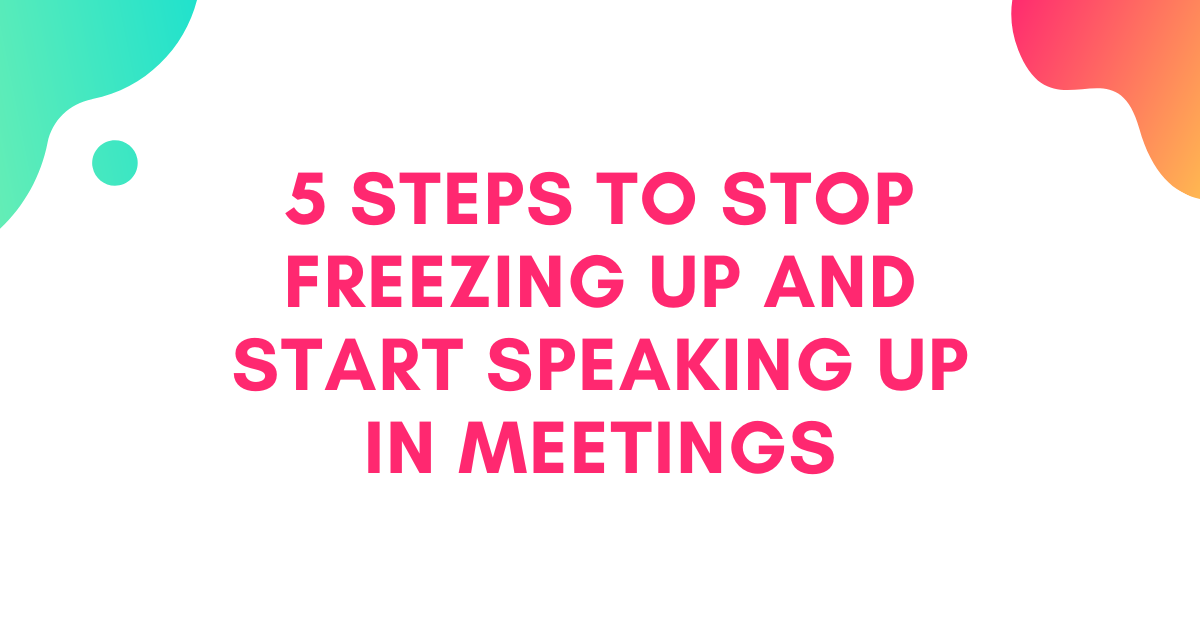The Executive Presence Trap
Ask a bright, ambitious manager how they’d know they have executive presence — and you might hear something that sounds more like a hostage situation than leadership.
For example:
If you think executive presence is about everyone on the leadership team (including Snarky Sam) nodding their heads approvingly during your presentation...
And if you constantly beat yourself up over the ceaseless shoulda-woulda-coulda looping in your head...
You're held captive by the myth: "I'm not good enough."
That gnawing sense of inadequacy?
That low-grade anxiety that hums under even your biggest wins?
It's NOT because you haven't done enough.
It's because your sense of self-worth has been taken hostage by a fantasy — one built on perfectionism and people-pleasing.
And if this hits home, please know: This isn't your fault.
And there's absolutely nothing wrong with you.
The best and the brightest, the most dedicated and diligent, get caught in this myth, because our fractured society encourages it.
Even though (or perhaps precisely because) the myth pulls you out of the essential element of executive presence:
PRESENCE.
The real ingredient in executive presence isn’t a picture-perfect performance.
It's embodied presence: a regulated nervous system expressing itself through steady breath, open posture, and calm eye contact.
It's the body’s way of saying, "I’m safe enough and sufficient enough in this moment to show up as I am.”
And you can't access this while you're been taken hostage by the perfectionist fantasy.
The way out isn't in overworking yourself to haul the weight of three people (yet again), nor does it lie in the approval of your direct reports.
The key to your liberation and accessing your presence is within your hands.
Here's what to do:
1. See the fantasy for what it is: a mirage, not reality.
Notice how comparing yourself to perfection causes constriction in your throat and chest. That tension is your body letting you know: this isn't truth, it's fear talking.
2. Cultivate self-trust.
Self-trust is built in small, everyday moments. It grows when you pause to listen inward instead of defaulting to external approval.
It grows when you allow yourself to speak honestly, even if your voice shakes. When you honor your values (and the value you bring) over others' misguided expectations. When you stop outsourcing your confidence to how others react.
Please don't mistake this as arrogance. Genuine executive presence is about anchoring into your own authority.
3. From there, make daring moves.
Not reckless ones, but intentional, grounded, strategic moves. Moves that align with your truth and stretch your capacity in a way that enlivens, not burns you out.
This is where real executive presence begins to radiate—from the inside out.
Not because everyone nods when you talk.
But because you no longer need them to.
This is how my client Tracy went from being under-promoted and burnt out in a previous job to negotiating a high-paying VP role and leading investor discussions at an AI startup.
How Dara became the youngest and only female person in her aero-engineering company to be promoted to management, even though folks initially doubted her.
I can help you do the same.
Executive coaching with me is about expediting the process for genuine, sustainable growth with brain-expanding tools based on science and proven self-advocacy frameworks that simply work.
To get started, book a free 60-minute consultation with me by clicking on the button below.
In a private consult, we’ll map out where you are, where you want to go, and the exact steps to get there before you commit to anything.



![[REPLAY] Calm, Grounded, and Confident in 15 Minutes](https://images.squarespace-cdn.com/content/v1/5ab420f6af2096d66f37cbec/1692987550804-9GBAPWSKWFI04ZR824G6/Copy+of+Blog+Image+Title-12.png)

